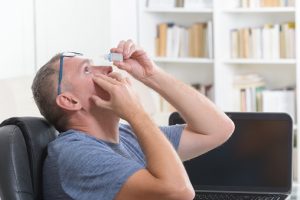 Dry, itchy eyes can occur for several reasons including allergies or illness. Most people suffer from dry, itchy eyes in the spring or summer, but they can occur in the winter too. This is because your eyes are constantly being exposed to dry, warm air from heater systems, a reduction in humidity, and colder temperatures. Dry, itchy eyes are quite irritating and can make performing regular daily tasks quite challenging.
Dry, itchy eyes can occur for several reasons including allergies or illness. Most people suffer from dry, itchy eyes in the spring or summer, but they can occur in the winter too. This is because your eyes are constantly being exposed to dry, warm air from heater systems, a reduction in humidity, and colder temperatures. Dry, itchy eyes are quite irritating and can make performing regular daily tasks quite challenging.
How to prevent dry eyes in the winter
To prevent these occurrences, there are several different tips you can utilize, including:
- Using a humidifier
- Staying well hydrated and drinking plenty of water as it maintains moisture in your eyes
- Protect your eyes from extreme cold and wind by using a visor, goggles, or a hat
- Prevent direct dry heat from blowing in your face
- Drink less coffee
- Avoid rubbing your eyes
- Close your eyes more frequently
- Shorten the amount of time you wear contacts
- Find an effective eye drop
Advertisement
If you wear contacts, dry eyes in the wintertime are a problem for you. Ensure that you are practicing proper contact hygiene by always wearing a clean pair, using contact lubricants, and not reusing the same pair for too many days.
In some rare cases, dry eyes can progress to a more serious eye disease. If you’re concerned that your dry eyes are a serious problem, don’t hesitate to speak to your doctor. If you suffer from chronic dry eyes, then, unfortunately, there is no cure. But your doctor can assist you by recommending treatments to offer you and your eyes relief. Some remedies include medications, eye drops, ointments, or plugging tear ducts to slow tear drainage.
Symptoms of dry eyes
Symptoms of dry eyes include blurred vision, stinging, burning sensations, increased irritation, eye fatigue, light sensitivity, redness, the feeling of having something in your eye, and periods of excessive tearing.
Diagnosis of dry eyes
At first, your doctor will take into consideration your situation and then run a series of tests to uncover the potential cause of your dry eyes. Below you will find the common tests which can help diagnose dry eyes.
Fluorescein dye test: For this test, special eye drops containing a yellow dye are used in the eye, allowing the eye specialist to see tears more clearly. This test also helps determine how long it takes for your tears to dry out. If there is any damage to the surface of the eye, the dye will highlight these areas as well.
Schirmer’s test: Small blotting paper strips are hooked on the lower eyelid. After about five minutes, the strips are removed to detect any wetness from the eye. Strips that have accumulated less than 10mm of wetness in five minutes indicate dry eyes.
Advertisement
Lissamine green test: This is a special green dye on paper test. The strip is diluted with saline and then dropped on the surface of your eye. The green color of the strip allows for the specialist to detect damage to the surface of the eye.
Along with these tests, you will undergo a comprehensive eye exam.
Related: Dry eyes signs, symptoms, and causes
